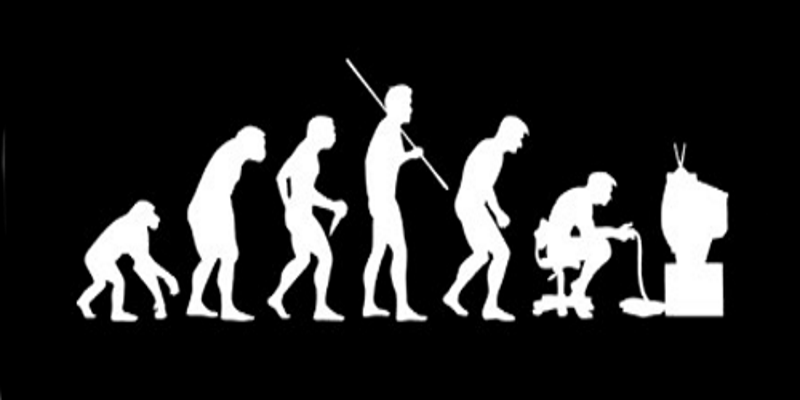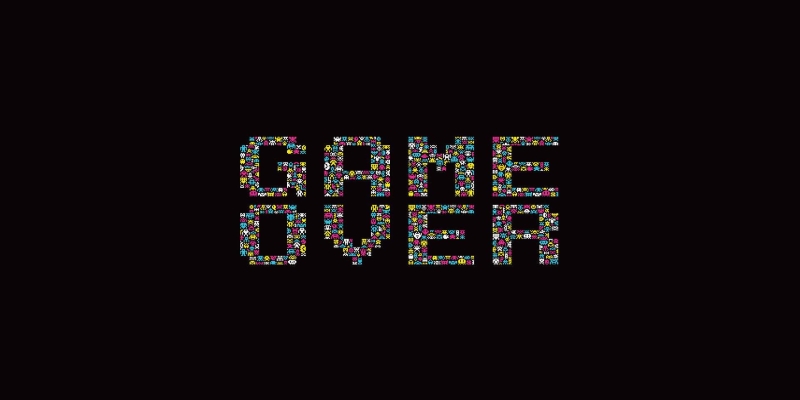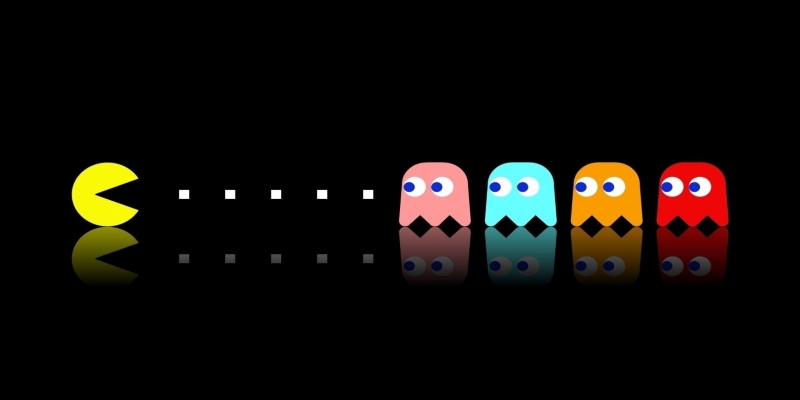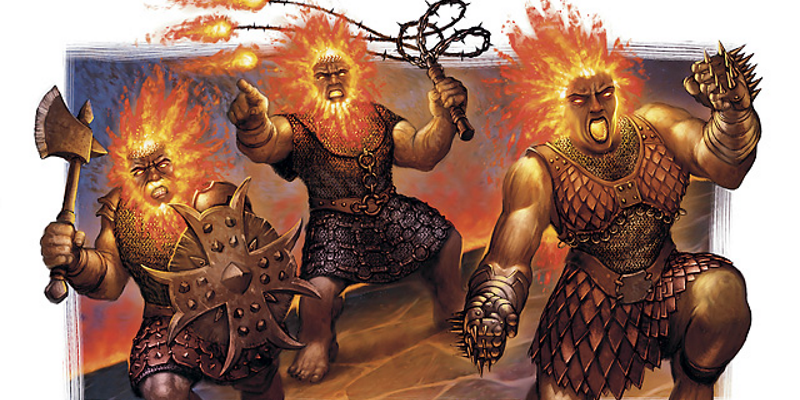e-D&D and Parallel Experiences

In a lot of ways, I’m a curmudgeon of a luddite who is afeared of technology. I mean, sure, I’ve literally worked on space telecommunications, but for some reason podcasts seem new and terrifying. Video streams, and even YouTube channels, don’t seem weird or foreign, but podcasts? It’s strange magic performed in the woods by the Sheldon gang summoning the Black Goat of a Thousand Young. Shubby N. is a good dude, I’m sure, but we have a hard time relating to each other. We just have very different backgrounds, ya know?
I have a similar problem when it comes to audio books. I am always reading, but I can’t follow along with an e-book, because I have poo brain and drift in and out of paying attention. I wish I could pay attention better – my reading list is gigantic – but I just can’t. Unfortunately, D&D falls into the same space as audiobooks and podcasts, because of the way the medium is presented. However, this has little to do with the major issue facing the expansion of D&D’s popularity. The major problem with the burgeoning, yet ultimately stunted, performance of D&D on the streaming scene is simple to explain: there is no parallel play experience for D&D.

Let me unpack that a little bit more, and expand the statement: It is extremely unlikely, approaching the point of impossibility, that any two D&D games are similar. Naturally, this puts D&D in a space where any game might be wholly unrecognizable from another. For example, the game I run can often go sessions without combat, focusing on wealth and stronghold building, but can end up with multi-session dungeon crawls at the drop of a hat. The game is hugely focused on PC action, with no care given to what I “prefer” (check out this for some insights into what I am currently running), while one game I play follows an adventure path approach. The other two games I play are more once per month, feature affairs, and vary wildly. One is much more open than the other.
None of the games really resemble each other, despite some having overlap in players. I understand that part of the idea of Adventurer’s League is to standardize the experience to within a certain tolerance. After all, a paladin running around at third level with a holy avenger when the rest of the party has a ring of protection between them is not really a great experience for most people. However, you simply can’t standardize GM-flair, preference, or group dynamic. Nor can you standardize player expectation.
The rise of streaming has been really cool to watch. I was pretty competitive in several online scenes for some time, and I have loved seeing people get into the time-honored tradition of “want to watch me play games?” I watch both personal streams and produced content. The produced content is preferable, for me, because I don’t care too much for the chat components, and I am a huge proponent of analysis. That said, the personal feel of user-run streams in unmatched. It’s the accessibility of Twitter with the intimacy of a coffee shop. You share a secret as the two of you lounge in pajamas, drink coffee, and burn the forests down in order to Not Starve. However, both of these things are bound together by an underlying common experience. This is where D&D falls apart.

When I watch Hearthstone in a stream, a lot of things are going on. First, it might be competitive play, solo adventure play, friendly scrims, private tournament play, public tournament play, arena, or brawl mode. I should be able to tell if the are playing wild or standard at a glance. I should have a reasonable grasp on the heroes and decks I see, even if I have been out of the game for awhile, which I have been #season2legendsrepresent. The one thing I cannot reasonably expect is the players possessing the exact same cards I possess at this moment in time. However, there is no barrier outside of time and money that sets this limit. No matter what is going on. If I invest the time to earn gold, and spend the gold on packs, or on arena if I can guarantee at least seven wins, I will eventually have these cards.
Once I have done this, the only limiters I face are my individual skill and the random people I face in games. I can mitigate, but not eliminate, or ameliorate as opposed to ablate, if you’d prefer, these two factors, in large part thanks to the streams I watch. The more I watch, the better understanding of the meta I should gain, and, more importantly, the better understanding of why those plays were the correct plays I should gain. In short, the more I watch the stream and dedicate energy to studying it, the better it makes me. Even if I am not looking for betterment – let’s say I am already a legendary hero – I can listen along, or watch and judge, let’s be perfectly honest, here, and have a reasonable expectation that the Hearthstone Ranked 5 player TygerBallz[RawR] is experiencing is the otherwise the same Hearthstone I would experience.
This is absolutely critical to understand, because D&D does not, and cannot, provide this important aspect of the collective experience.

While I am not saying D&D has not enjoyed a boon from streaming and YouTube, I am confident in saying that the boost it has enjoyed is marginal compared to the rest of the popularity it has gained in recent years. Sure, people watch some celebrities playing in a highly-produced weekly game with their celebrity friends, but the fact is, this should be a much more popular thing than it is. There are myriad streams and channels dedicated to playstreams, but these numbers are casually shattered by the average afternoon game viewing of even the third most popular MOBA.The fans of D&D and number of people who actively play D&D are way higher than the fans and players of this game, so you’d think the same rules of streaming would apply. Young, bubbly, attractive streamers, sitting down, playing characters the stream helped them create, or playing a crowd-sourced GM session. However, this is a lot rarer and a lot less successful than you would think.
It boils down to the fact that the resultant game I watch bears little to no resemblance to any game I might run or play. Worse, some of the behavior evidenced might be at direct odds with my play sensibilities. While John can certainly play Honey Dizzyhands, the gnome seductress extraordinaire, the group I play with might not be interested in romance at all, or has written it into a play contract that they all wanted to avoid it after it has derailed many games into a fantasy-edition of the Bachelor, or something. It might also be that the tropes expressed with love and care by the group we are watching are ones so loved by us, to the point where we find them abrasive or immersion-breaking when encountered. The continual kidnap of Prince Helplessington, or whatever.
To really hammer things in, the rules they use might bear no resemblance anything in use by me, my friends, or people I know. Sure, this can somewhat be addressed with careful categorization (4e, 3.5, Pathfinder, 5e, etc), but it’s not that simple. I’ve asked people how many homebrew rules they use, and most say, “not much.” However, when I ask them to write them down, two things happen. First, the tend to realize they do have at least a handful of house rules. Second, many begin to realize that many rules they believe are core are in fact one-offs they have accumulated from years of play and table contracts. This is something as easy as “you may either take half of your hit die, rounded up, when you level, or you may roll the die and take the result.” It might be something more substantial like, “we play with the alternate standing rules”, “humans use the alternate human rules”, or “all characters start with a feat.” It makes a lot of sense that most of these changes aren’t even processed as changes. Games likely started during public playtest, were carried over from previous campaigns, or are a new campaign put together from old faces, or a collection of old and new ones.

At an even higher level, the type of game can easily bear no resemblance or familiarity to ones I run or play. One game is all about low-level exploration, civic duty, and adventuring in a breathing world. One game is about the reawakening of ancient magic in a fearful and discordant world, another is just about a family trying to regain their station in life, and falling into fables along the way. Yet another is just about adventure and heroism. A game I watch might be about magic resurfacing in the technology of a contemporary magocracy, an arcane-powered kaiju campaign with magical robots, or a living operatic expression of Faust. While these are all interesting, and I would love to know more about them, there is only so much I can gain from watching them, as the play experience is not parallel to mine own. Hell, so are so different to be almost perpendicular.
It might not sound all that deep, but I firmly believe this is a limiter that D&D, and other RPGs, need to overcome, if they are to take the next step in today’s media. I think now is a unique opportunity to do so. The technology is established, but is still at the precipice of global expansion. Twitch Prime makes subscription and support of the medium easier than ever. Twitch inclusion means easy expansion to many physical platforms, like Teespring or Kickstarter campaigns. Let’s make no mistake, while tabletop gaming has been around for decades, it is experiencing a new age of renaissance and acceptance.
So what can be done? Well, the first step is inclusion. The layers of superiority and experience have to be peeled back even further. It doesn’t matter how long we have played. It does not make us better. We should be helping to explain why we love what we love, and provide paths to engagement. We should be looking for the universality of the experience, not the minutiae that are so easy to get lost in. The second thing is to increase the transparency.What about your homebrew is different here? Why did you make the call? Do you have some use cases? Explain why you have made your changes, stopping to highlight the good AND the bad. Pretending perfection serves no one well. Third, engage even further with the audience. The audience needs to gain a level of investment outside of the viewer/performer relationship. This needs to be ingrained at a level at least akin to a Let’s Play, and might even border on full choose-your-adventure. The rules of this should be clearly and readily accessible.

It might not like seem like much, but this market should already be dominated by tabletop games. In truth, it flat out needs to be. The market is growing, and the way we consume it is already changing. We need to be prepared to meet its needs and demands. There is a chance here to grow more rapidly, and reach more people than ever before. Let’s be up to the challenge. It should start at the top, but we can do what we can to make it start at the bottom. There are a number of easy steps we can take:
- Embrace tabletop as a visual medium – Fantasy Ground, Roll20, whatever. We need to take advantage of the music integration, the hand outs, the drawings, the maps, you name it. It needs to be visually interesting, and the immersive qualities should be highlighted. In a perfect world, we would get props as part of adventures. Hell, even spells in visually interesting formats.
- Highlight group choice – every time a decision point is reached, mark it down, and present it in a visually interesting way. If you mark out minor and major decision points, all the better. Milestones should be visible as a way to calculate drift.
- Quests and NPC interaction – a story web is a necessity. Viewers might know your game, but probably not. The viewers need to see it from your perspective with the maximum amount of info. The need to know what connects where, and why the who is doing it. Highlights are fine, but the viewers feel the weight of the impact through knowledge, rather than visceral experience. Let them double down.
- Crowdsource – When you can, turn to the viewers to lend a hand. Vote on names, places, chart some random encounters, self-populate as special guests. Provide roles they can fill in as observers. Ownership and call to action go a long way together. It doesn’t need to be all the time, but it can easily be pre-populated for consideration.
- After Action Q&A – when the session ends for players, it doesn’t need to be over for viewers. Run down what went well, what fell flat, why you made certain choices, why you think the players did what they did, what were their expectations, and so on. A pre-game version of this would be great, too. Sports shows have the analysis component for a reason, after all. It’s a formula that works, and provides intimacy and access, two cherished things with “personalities.”
There are a million more ideas. This is just a starting point. Let’s be better. Let’s grow. Let’s shake things up.
Let’s play.
(If you DO know of consistent D&D streams that occur simultaneously and routinely break 1k viewers concurrent, let me know. I am not infallible.)00



